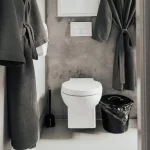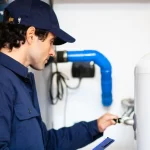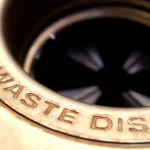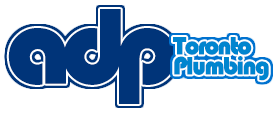Ontarians lose billions of dollars’ worth of water because of water leaks every year, according to a 2009 report by the University of Toronto. Although the study focused mainly on municipal water pipes, it’s not much better in homes across the province. Residential water requirements equal 51% of Toronto’s total annual water usage of 393,251 ML. With the average home losing 8% of the water through leaks, residential water losses occurring in the city add up to 16,051 ML a year. This makes leak detection an essential part of every household’s environmental and civic responsibility.
Checking the Meter
The first step in conducting your own leak detection is to check your water meter. Turn off all faucets and other water outlets in the home, and tell your household not to flush any toilets or run the washing machine until you are done. Once you are certain no water is being used, check the water meter and record the usage. Watch the meter for five minutes; in the event of a major water leak, the meter will continue running visibly. Small leaks, however, may take a short time to register, so if it appears to be still come back after 10 – 15 minutes and record the usage again, comparing it with your first recording.
Leak Detection in Toilets
Once you’ve determined that you have a leak, the challenge is to work out where it is. This information is useful in the event that you need to call in a plumber to bring a water leak detector. At least you will be able to advise the plumber where to start. Leak detection in toilets is simple:
- Flush the toilet so the tank fills up to the brim with fresh water;
- Add a few drops of food coloring to the water in the tank;
- Check the toilet bowl after a while.
If any food coloring appears in the bowl, it means you have a leaky tank, which could be costing you a substantial amount of money every month.
Water Outlets and Connections
Other residential water outlets that can potentially be leaky culprits include showerheads and faucets with worn washers. Leak detection can often be done simply by looking at the outlet and identifying whether it is dripping, running or even just collecting water drops, which could signify a very slow leak. Feel around the heads and exterior pipes of the faucets to check for moisture released by a worn rubber washer, and don’t forget to do the same at locations where the outlets connect with the piping. Sometimes a squirt of silicone sealant is all you need!
Leaky Water Pipes
Leak detection in water pipes is slightly more complex. Many old Toronto homes have water pipes hidden within their walls, and it’s difficult to find leaks without tearing apart sections of the wall. Modern plumbers use sophisticated water leak detectors, however, such as sonar, tracing and video cameras to locate and inspect leaky pipes. The pipes can often be repaired without digging, using the latest in trenchless technology such as cured-in-place pipe lining and pipe bursting.
Toronto plumbers can detect your leaks
If you suspect you have a water leak in your home or office building, follow these steps to get an idea of where the problem exists, or contact your local plumber to perform professional leak detection using the latest equipment available. The earlier you find and take care of a water leak, the less it will cost you in utility bills and repairs.






